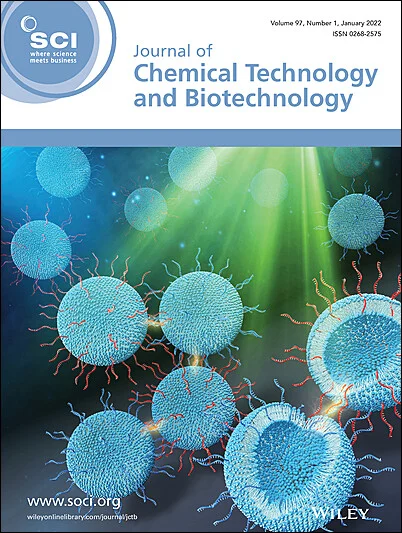下载PDF
{"title":"缓蚀剂的进展:纳米材料作为保护金属的可持续解决方案","authors":"O Swathy, S Shanmuga Priya, Meghana K Navada, Lavanya Mulky","doi":"10.1002/jctb.7917","DOIUrl":null,"url":null,"abstract":"<p>Corrosion is a global concern that leads to significant structural damage and economic losses. Additionally, corrosion control is essential from intellectual, economic, ecological, and aesthetic perspectives. Among various corrosion control techniques, the use of inhibitors remains the most practical, cost-effective, and efficient method to protect metals from degradation. However, conventional inhibitors such as chromates and sulfates often contain toxic and environmentally hazardous substances, posing serious risks to both human health and ecosystems. In response to these concerns, the development of sustainable and eco-friendly corrosion inhibitors has gained considerable interest. The increased surface area, distinct physicochemical characteristics, and improved protective capacities of nanomaterial-based inhibitors have made them attractive substitutes. Recent developments have concentrated on using green synthesis techniques to create ecologically friendly and efficient nanomaterials for corrosion control. This strategy supports sustainable development objectives while reducing the use of dangerous chemicals. Green-synthesized nanoparticles have been shown in numerous experiments to significantly decrease metal corrosion rates, particularly in hostile environments like acidic solutions. Thus, the combination of green chemistry and nanotechnology presents a promising avenue for creating corrosion inhibitors of the future that are both effective and environmentally friendly. Several nanoparticles, including carbon dots, carbon nanotube hybrid nanoparticles, carbon quantum dots, and nanocomposites, have gained attention for their superior corrosion-inhibiting capabilities. Nanoparticles strong interactions with metal surfaces lead to the creation of protective barriers. This review highlights the effectiveness and potential for sustainable corrosion control by examining the several nanomaterials as corrosion inhibitors for different metals and also deals with challenges and future aspects of nanomaterials as corrosion inhibitors. © 2025 The Author(s). <i>Journal of Chemical Technology and Biotechnology</i> published by John Wiley & Sons Ltd on behalf of Society of Chemical Industry (SCI).</p>","PeriodicalId":15335,"journal":{"name":"Journal of chemical technology and biotechnology","volume":"100 10","pages":"2004-2018"},"PeriodicalIF":2.4000,"publicationDate":"2025-06-24","publicationTypes":"Journal Article","fieldsOfStudy":null,"isOpenAccess":false,"openAccessPdf":"https://scijournals.onlinelibrary.wiley.com/doi/epdf/10.1002/jctb.7917","citationCount":"0","resultStr":"{\"title\":\"Advances in corrosion inhibition: nanomaterials as sustainable solutions for protecting metals\",\"authors\":\"O Swathy, S Shanmuga Priya, Meghana K Navada, Lavanya Mulky\",\"doi\":\"10.1002/jctb.7917\",\"DOIUrl\":null,\"url\":null,\"abstract\":\"<p>Corrosion is a global concern that leads to significant structural damage and economic losses. Additionally, corrosion control is essential from intellectual, economic, ecological, and aesthetic perspectives. Among various corrosion control techniques, the use of inhibitors remains the most practical, cost-effective, and efficient method to protect metals from degradation. However, conventional inhibitors such as chromates and sulfates often contain toxic and environmentally hazardous substances, posing serious risks to both human health and ecosystems. In response to these concerns, the development of sustainable and eco-friendly corrosion inhibitors has gained considerable interest. The increased surface area, distinct physicochemical characteristics, and improved protective capacities of nanomaterial-based inhibitors have made them attractive substitutes. Recent developments have concentrated on using green synthesis techniques to create ecologically friendly and efficient nanomaterials for corrosion control. This strategy supports sustainable development objectives while reducing the use of dangerous chemicals. Green-synthesized nanoparticles have been shown in numerous experiments to significantly decrease metal corrosion rates, particularly in hostile environments like acidic solutions. Thus, the combination of green chemistry and nanotechnology presents a promising avenue for creating corrosion inhibitors of the future that are both effective and environmentally friendly. Several nanoparticles, including carbon dots, carbon nanotube hybrid nanoparticles, carbon quantum dots, and nanocomposites, have gained attention for their superior corrosion-inhibiting capabilities. Nanoparticles strong interactions with metal surfaces lead to the creation of protective barriers. This review highlights the effectiveness and potential for sustainable corrosion control by examining the several nanomaterials as corrosion inhibitors for different metals and also deals with challenges and future aspects of nanomaterials as corrosion inhibitors. © 2025 The Author(s). <i>Journal of Chemical Technology and Biotechnology</i> published by John Wiley & Sons Ltd on behalf of Society of Chemical Industry (SCI).</p>\",\"PeriodicalId\":15335,\"journal\":{\"name\":\"Journal of chemical technology and biotechnology\",\"volume\":\"100 10\",\"pages\":\"2004-2018\"},\"PeriodicalIF\":2.4000,\"publicationDate\":\"2025-06-24\",\"publicationTypes\":\"Journal Article\",\"fieldsOfStudy\":null,\"isOpenAccess\":false,\"openAccessPdf\":\"https://scijournals.onlinelibrary.wiley.com/doi/epdf/10.1002/jctb.7917\",\"citationCount\":\"0\",\"resultStr\":null,\"platform\":\"Semanticscholar\",\"paperid\":null,\"PeriodicalName\":\"Journal of chemical technology and biotechnology\",\"FirstCategoryId\":\"5\",\"ListUrlMain\":\"https://scijournals.onlinelibrary.wiley.com/doi/10.1002/jctb.7917\",\"RegionNum\":4,\"RegionCategory\":\"生物学\",\"ArticlePicture\":[],\"TitleCN\":null,\"AbstractTextCN\":null,\"PMCID\":null,\"EPubDate\":\"\",\"PubModel\":\"\",\"JCR\":\"Q3\",\"JCRName\":\"BIOTECHNOLOGY & APPLIED MICROBIOLOGY\",\"Score\":null,\"Total\":0}","platform":"Semanticscholar","paperid":null,"PeriodicalName":"Journal of chemical technology and biotechnology","FirstCategoryId":"5","ListUrlMain":"https://scijournals.onlinelibrary.wiley.com/doi/10.1002/jctb.7917","RegionNum":4,"RegionCategory":"生物学","ArticlePicture":[],"TitleCN":null,"AbstractTextCN":null,"PMCID":null,"EPubDate":"","PubModel":"","JCR":"Q3","JCRName":"BIOTECHNOLOGY & APPLIED MICROBIOLOGY","Score":null,"Total":0}
引用次数: 0
引用
批量引用




 求助内容:
求助内容: 应助结果提醒方式:
应助结果提醒方式:


